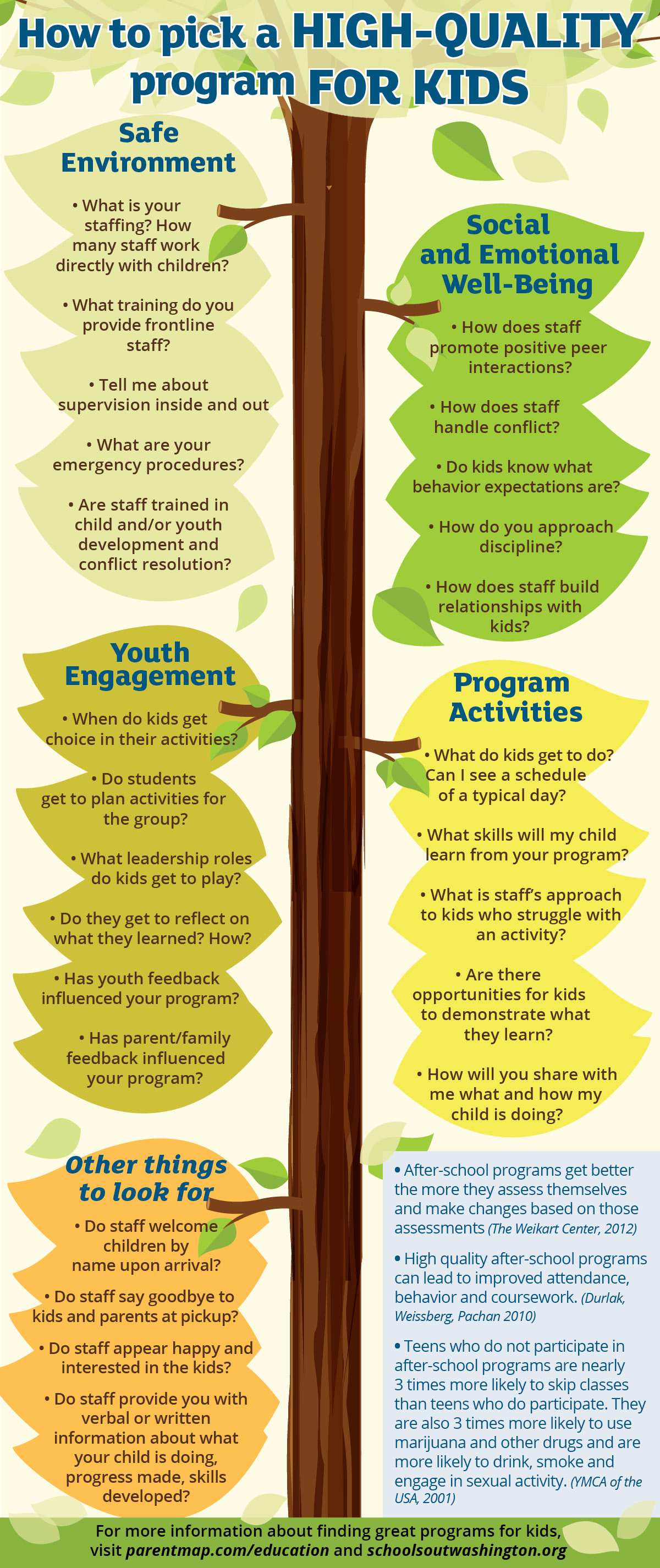

Here in the Pacific Northwest, it’s felt like spring since January; ski gear has gathered dust, and heavy coats have stayed in the closet. So we parents can be forgiven for being a little discombobulated. Summer (real summer, as in that time of year when kids are not in school during the day) is right around the corner, and frankly, some of us feel caught off guard.
The fact is we need to find summer care for our kids. And not just any care; we want good-quality care. As we have reported in this multipart series, that means programs that engage children in meaningful activities that they can reflect upon afterward; that are culturally responsive; and that offer opportunities for youth leadership.
But the most basic criterion for any program serving children is that it offers a safe environment. “Parents first need to ask about staff ratios,” recommends Brian Pitt, a recreation specialist for Metro Parks Tacoma’s Sparx program.
“With any program or camp, the cost you’re paying for is generally the cost of staff, so watch out for low-priced programs, because you have to ask, ‘What are they cutting?’” And Pitt advises that parents ask what those staff members actually do: How many are with the kids at any given time? How many walk around managing?
This spring at Truman Middle School in Tacoma, Sparx students have had a choice of cooking, math help, drama or breakdancing sessions after school.
It’s a good sign when kids want to be in a program. In Truman’s cooking group, chef Ron Rzewnicki teaches kids a variety of ethnic recipes. Sixth-grader Zoe White made her apple enchilada recipe for a family holiday meal. “They learn in this class that there is no one way to do things,” says Rzewnicki. With knives and culinary tools involved, he has an assistant helping, which allows kids to experiment in this safe environment. “I’ve even had these kids eating sauerkraut!” he says.
Jenny Keister mostly homeschools her seventh-grade son, Jake, but she still brings him to the Sparx drama program. “He likes being a leader, a role model,” she says. Through the program, Jake will be the stage manager for production of an upcoming murder-mystery dinner.
Parents should also look for programs that encourage wellness; promoting health and nutrition can have a lasting impact on children’s health. On one recent afternoon at McGilvra Elementary School in Seattle, kids came bounding in for fresh fruit and sandwiches made with whole wheat bread. “But wait, kids,” reminded one of the staff members, “wash your hands first!”
“We try to take that one weight off parents’ shoulders, where parents can be stuck in traffic but at least not have to worry about where their kids are or if they’re in a safe place.”
- Christina Arcidy, ARC Deputy Director
In Seattle public schools and community centers, after-school and summer day care programs are often run by the Associated Recreation Council (ARC), a nonprofit that provides recreation programs for the city’s Parks and Recreation Department.
In 2014, an average of 1,533 students relied on an ARC program for out-of-school care, according to deputy director Christina Arcidy. Hours of care depend on the needs of that community. For example, some parents living in the South Park neighborhood of Seattle need to leave for work earlier, so ARC started offering care at 6:30 a.m. and going later, until 6:30 p.m. “We try to take that one weight off parents’ shoulders, where parents can be stuck in traffic but at least not have to worry about where their kids are or if they’re in a safe place,” Arcidy says.
In leading McGilvra’s program, Carolyn Whipple offers a different “active challenge” each week. Whether working with a soccer ball or acting out animal-based movements, students are rewarded with neon shoelaces or other fun items if they complete the challenge. One recent afternoon, the students learned how to make zucchini bread from scratch. “We prioritize healthy food here; once every few months we might have a junk-food snack, but that’s it,” says Whipple.
Katia Farage finds it tough to extricate her kindergarten-age son, Ziad, from the program at the end of the day. This is the single mom’s first summer of trying to piece together camps and care while she works full-time. Because of her good experience with the McGilvra program, she plans to have her son make the transition from the after-school program to ARC’s nearby summer program at the Montlake Community Center. Beyond that, Farage admits, “I’m really still trying to figure this all out.”
There’s so much to think about when it comes to summer care, and often our kids are in multiple camps and programs. But keep some basic questions in mind, particularly regarding staff numbers. Also, don’t be afraid to ask questions such as: “How are bathroom breaks handled?” or “What would staff do if a child was stung by a bee, or if a child falls and hits her head during an activity?”
There may not be a right or wrong answer, but as Sparx’s Brian Pitt points out, “If they are quick to answer and actually have an answer, that’s a good sign. If not, it may mean that program does not have a plan in place.”












